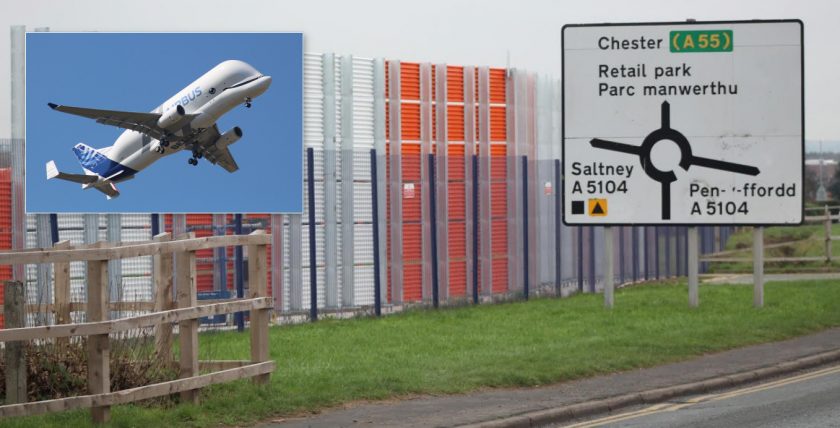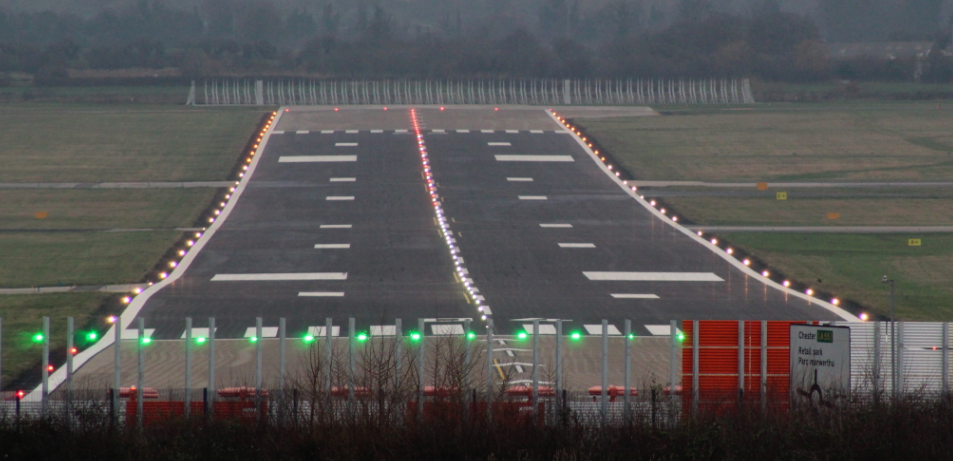Hawarden Airport gearing up for Beluga XL debut

Final preparations are underway ahead of the much-anticipated debut of Beluga XL – the next generation of transport plane from Airbus.
A huge orange and white ‘blast fence’ has appeared alongside Chester Road in Broughton between the main perimeter fence of Hawarden airport and the runway.
The 200ft long 14 ft high fence now obscures a large part of the runway from public view at a popular vantage point.
It is one of two being erected at the airport, the others are at the far end of the runway.
The first of five BelugaXL’s to be built successfully completed a four-hour maiden flight on July 19 taking off from Blagnac in Toulouse.
Following the maiden flight no.1 BelugaXL has embarked on a 10-month, 750-flight hour certification campaign.
As part of the certification process the giant airlifter is expected to fly over to Airbus Broughton sometime in February, though a date has yet to be confirmed.
With a wingspan of 60 meters – 35% bigger than of the existing Beluga – along with increased capacity and take-off weight, Hawarden Airfield is being upgraded to a ‘Code E’ aerodrome which has required modifications ahead of the new transporter coming into service.
As well as the resurfacing of the runway, new turn pads have been constructed to both ends of the existing runway as well as the erection of the blast fences.

The new fences being constructed at either end of the Hawarden airport runaway.
Blast fencing, also known as jet blast deflectors – are a safety device that redirects the high energy exhaust from a jet engine to prevent damage and injury.
The new BelugaXL with its instantly recognisable ‘smiling whale’ livery, is fitted with two Rolls Royce Trent 700 engines they will pack around 30% more thrust than the General Electric power plants fitted to the current Beluga fleet.
BelugaXL’s greater size enables the new-generation airlifter to accommodate two A350 XWB wings, the current Beluga can only carry one, this will speed up their transport from Broughton to the final assembly line in Toulouse.
Additionally, the BelugaXL’s 30% extra capacity compared to the current Beluga provides potential to meet ramp-up needs to meet customer demand for Airbus jets.
An Airbus spokesman said:
“The blast fences are the final preparations for the entry into service of the BelugaXL later this year. The new aircraft will be able to transport two A350 wings simultaneously and are vital in securing Airbus’ future plans.”
Once in service, the fleet of five BelugaXLs will begin to replace the similar number of Beluga A300-600 which have been in service since 1995.
Each aircraft will perform between 900 and 1,000 flights per year, logging some 1,700 to 1,800 hours annually in servicing 11 line stations at locations across the company’s European industrial network.
A second Beluga XL, which is in the final phases of assembly in Toulouse will be the first into service.
Spotted something? Got a story? Email: [email protected]
Latest News
